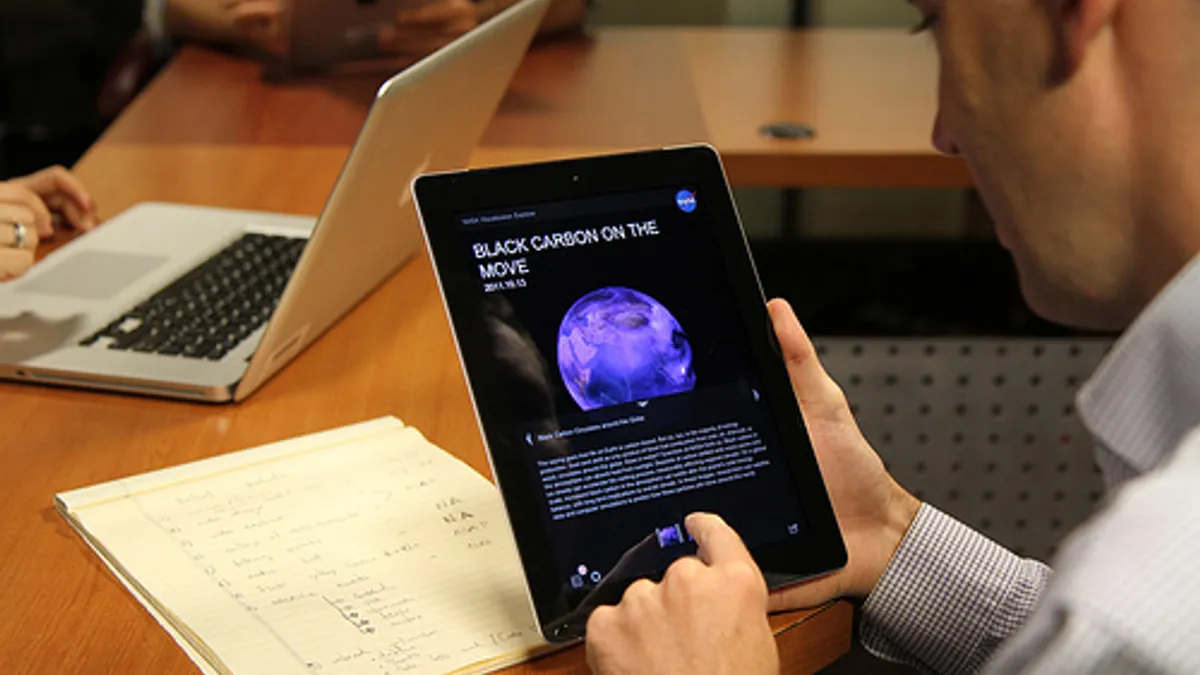Today's employee may be as busy training for the future as they are performing their daily duties — but when push comes to shove, most focus on their day-to-day tasks rather than their lessons. What many workers may not realize is that upskilling can be as mission-critical as getting work out the door.
As more employees demand learning, companies are upping their investment — but employees don't always take full advantage of those resources, despite asking for them. In response, employers may need to shift how they present learning opportunities. Rather than making training yet another task on an employee's endless to-do list, employers may need to signal just how valued upskilling is to the future of the company.
Creating a desire to learn
Real learning starts with a culture directed from the top down, Maria Ho, manager of ATD research services, told HR Dive. "Employers should create a culture of learning and encourage lifelong learning and self-directed learning," she said in an email. Rather than presenting learning and growth as a nice option, it should be tied directly to required outcomes. She suggested that employers make lifelong learning an organizational value and tie it to rewards, recognition, and mobility, and include it in performance expectations. Walking the talk is important; when employees see learning as valued, they're more likely to participate.
"Driving home the key goal of why they are having to do the training is a critical step," Ashish Rangnekar, CEO of BenchPrep, told HR Dive in an email. "If they think they are doing it for no good reason, it doesn't matter how good the software is. Setting the expectations of the end goal up front is the first step."
Beyond tying learning to performance goals, businesses will need to make sure workers can actually access the lessons provided. Partnering with educational institutions and using leaders as teachers can help an employer make training possible for all employees, Ho said.
But even as employees ask for more training, many are finding the material isn't providing real value to them. "The way to increase employee engagement is by offering relevant learning experiences, not the traditional one-size fits all," Andrew Smith Lewis, co-founder of Cerego, told HR Dive in an email.
Getting employees over the finish line
Motivating employees to finish the learning they've begun may require some adjustments. If a large portion of staff isn't finishing, the problem may be in the course rather than the learner. Is it too lengthy to be practical? Are the subjects covered relevant to the work being performed or need to be performed in the future? Do employees have the time to commit to completion? If the problem is widespread or consistent over specific courses or platforms, look within first.
If the problem is employee motivation to complete, then tying outcomes directly to performance expectations is a must. If learning is significant to the company, learning leaders will need to clearly communicate to employees that performance reviews could be negatively impacted by non-completion. But rather than generic "learn dictates," Ho recommended personalization; "Employees should have individual development plans and be held accountable for the goals laid out in them," she said.
Smith Lewis suggested companies track completion with platforms that offer time tracking and oversight over completion rates and even engagement. Such tools can help businesses keep track of who is getting over the finish line and who may need help.
Making employees understand the value
Knowledge for the sake of knowledge is fine, but in practice, few can afford to waste learning opportunities on material that isn't relevant to the work being done — either today or tomorrow. Instant gratification can be a strong motivator to seek out knowledge to make employees' jobs easier or faster.
"What is important for employees is figuring out where their career is headed, their career pathways," Rangnekar said. "It seldom happens that anyone is sitting there figuring out 'how do I learn something' just for the sake of it. Learning for employees is a means to an end."
L&D professionals must help staffers consider the next stage of their career, how to get there, and what will be needed to fill the gaps between. "Things are getting democratized," Rangnekar said. "A lot of power is in the employee's hands."
In turn, employers need to help employees think about what resources they need to reach their learning goals, he added. Managers can hold regular check-ins with their direct reports about their learning plans, help track against goals and make adjustments as needed to ensure learners stick with it in the long term.
Sharing knowledge can motivate as well. To show employees the real value of the time they've invested in learning, employers should give them opportunities to practice their knowledge and share it with their peers. ATD stresses lifelong learning as the path to performance, both personally and organizationally.
Making the business understand the value
Before designing a program, Ho noted, learning pros should consider which metrics matter to the organization and how learning can help change those key metrics. After all, learning and business goals must be aligned. If the company sees no gain in performance metrics or growth from its teams, learning loses worth in the eyes of an organization.
Rangnekar advises that ROI is measured backward, from certain key performance indicators. Once these terms are defined, it becomes relatively straight forward to measure success and ROI. "For example," he said, "a lot of times you would bring in a software to improve efficiency, but a software can't do much until employees are trained how to use it."
Don't forget the platform
Getting workers to engage could be as simple as changing the program's platform. Mobile learners completed more than twice the number of total reviews and learned nearly 100 more concepts on average than those that relied on a non-mobile platform, according to a study by Cerego. The mobile content included short-burst learning with push notifications built in — reminders timed for when retention was weakest. While mobile may not fit every lesson, Smith Lewis said, mobile can be an effective training tool.
Getting employees to finish (or even start) learning relies on making knowledge valued, relevant and accessible. With those in place, employers may find that their workers are anxious to add to their skill sets.





















